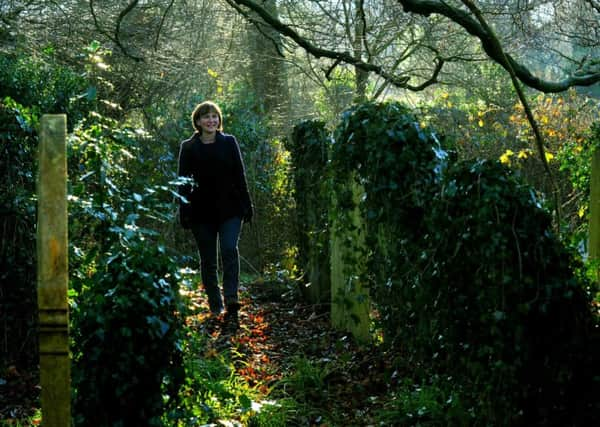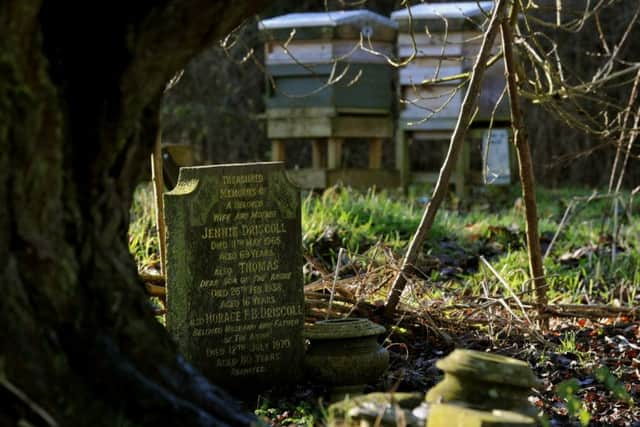Tulip amid the tombs: the designer cemetery in the heart of York


York Cemetery was opened in 1837 to compete with the overcrowded parish churchyards that were full to bursting with no space for further burials. If you have ever wondered why some churchyards are higher than the street, soil had to be imported to raise the level and create more accommodation.
The York Health of Towns Association met on June 10, 1847 and heard of woeful overcrowding in the city. Freshly dug graves were said to fill with “loathsome mire” while fragments of human remains rose to the surface. In a moment of memorable horror, the meeting heard how a hungry dog had discovered a human leg bone “and bore it away in triumph to his lair, where he doubtless would feast on the putrefying remnants of mortality”.
Advertisement
Hide AdAdvertisement
Hide AdThis gruesome episode is recalled in the late Hugh Murray’s book This Garden of Death, which offers the fullest possible history of what is now a Grade II listed landscape and one of only two privately owned Victorian cemeteries in the UK.


The council ordered other graveyards to shut in 1854. York Cemetery expanded to its present size in the 1940s, but business fell away in the 1960s and the cemetery eventually went into liquidation in 1979.
The graveyard became overgrown and the beautiful chapel suffered at the hands of vandals and was so derelict that the roof fell in. In the 1980s, the York Cemetery Trust was formed and became the new owners, working with the help of the Friends of York Cemetery, a charity registered in 1988. The chapel has since been splendidly restored.
In a sense, York Cemetery is a hidden gem – that is if a space of 24 acres can be hidden. Just beyond the city walls, this graveyard garden is a haven of tranquillity and reflection.
Advertisement
Hide AdAdvertisement
Hide Ad“We’re in the centre of York – it’s amazing, isn’t it?” says Lizzie, as she explains her plans. New paths are already being laid, new seating is planned, thickets of brambles are being tamed by use of mattocks and an apple orchard has been planted with heritage varieties. Lizzie aims to edit the plants in the cemetery for seasonal interest for spring, summer and autumn. Chapel Avenue will have improved paths and formal planting, the Chapel Lawn will be improved, as too will the Birch Grove.


All this has been made possible by a generous bequest. “It’s enabled us to press on with a lot of the work we wanted to do,” says Lizzie.
The trust had approached the Heritage Lottery Fund, but is now pushing ahead independently, although further applications to the fund may be made for smaller grants.
“For instance, we want to put in a covered seating area so that people can be in the cemetery if it’s raining, or for people working in the cemetery,” says Lizzie.
Advertisement
Hide AdAdvertisement
Hide AdBy the gate a path runs alongside Cemetery Road. Lizzie wants to have a pergola here, picking up the theme from the now overgrown scented garden.
“When people come in we want to give them a better welcome,” Lizzie says. “As well as improving the path, we want to create an entrance that will encourage visitors to the main pathway. And the pergola will do that. It will frame the views.
“We will plant probably a hornbeam at the bottom, and we will have roses and jasmine, and honeysuckle and lots of scent as you walk down. And it will add height so that when people look through the railings you will get to see that it’s a garden immediately.
“We just want to pull people in. It’s got room to get lost. Even in our busiest periods, you can come here and not see anybody.”
Advertisement
Hide AdAdvertisement
Hide AdIndeed, we see nobody else as we walk, apart from workmen laying the new paths.
Turning right and walking alongside the high wall, you are in the original Victorian cemetery, which combines abandoned grandeur with nature gone rampant. Lizzie knows this wildness is part of the charm.
“That’s what makes it magical, being in an area where you can’t see what’s around so you want to walk round to the next space. So, we’re keeping that because that’s what makes it so beautiful,” she says.
“But we don’t want to be seen as the cemetery that’s overgrown. We want it to be a natural landscape and we want it to all be very natural and beautiful, without it being unkempt.”
Advertisement
Hide AdAdvertisement
Hide AdThe fernery is being reinstated, a few unwell trees are being felled and others planted. And the cemetery has many trees. “We’ve got a sequoia, a giant redwood. We’ve got a gingko, we’ve got beautiful varieties of sorbus,” says Lizzie. “All the Victorian section is ornamental and when you get into the modern section you’ve got lots of oaks and pines.”
As Lizzie enthusiastically details her plans, an obvious thought arises: You’re really excited about this place, aren’t you, Lizzie?
“I am,” she says, laughing. “I love it. I wouldn’t be doing it otherwise, it’s a lot of time and effort. Oh, here is the most lovely salix, the willow tree. I could spend hours looking at that.”
She is working unpaid as a trustee. “I don’t quite know how I fit it in,” she says. Lizzie, who lives in York with her husband and two sons, has 20 clients on her books and two major projects on the go. She is a Chelsea Flower Show medal winner and lectures and writes about garden design.
Advertisement
Hide AdAdvertisement
Hide AdNow we are in the middle section on the higher ground towards Walmgate Stray. “What I love about being here is that you’re on top of the world. It’s just so wonderful. We’re getting that perfect ecological balance, so you’ve got the tall canopy of the trees coming down to the larger shrubs and undergrowth to the small shrubs and ground cover, so we don’t need to maintain it.”
York Cemetery conducts an average of five burials a month, including green burials at the edge of the cemetery. “It’s fairly full but we have lots of space for the next five years,” says Lizzie. “And we think we have spaces for the next 20 years.”
After walking the avenue of stone angels, we reach the centre circle.
“It’s the heart of the cemetery which relates back beautifully to the chapel,” says Lizzie. “But you don’t know it’s here. It had become over-planted and people had gardened it in a way that isn’t necessary.”
Advertisement
Hide AdAdvertisement
Hide AdThe path is being cleared and laid in gravel to emphasise the circle, while elsewhere handrails are being put next to potentially unsafe steps.
Lizzie’s main wish is to attract more people to this place. “This is a landscaped park where people can come and enjoy the outdoors and nature and feel that they are getting away from it,” she says.
Richard Keesing is the chair and founding member of the York Cemetery Trust, which marks its 30th anniversary last month. In all those years, he has been in awe of what he has helped to save.
“The cemetery is a place of mystical beauty, where its peace speaks of eternal values and asks one to leave, for the moment, the hustle and bustle of the world and find tranquillity and renewal in a place of endless, poignant sadness,” Richard says.
As for Lizzie, plot or not, she adds: “It’s the best place on earth as far as I’m concerned. I love it.”